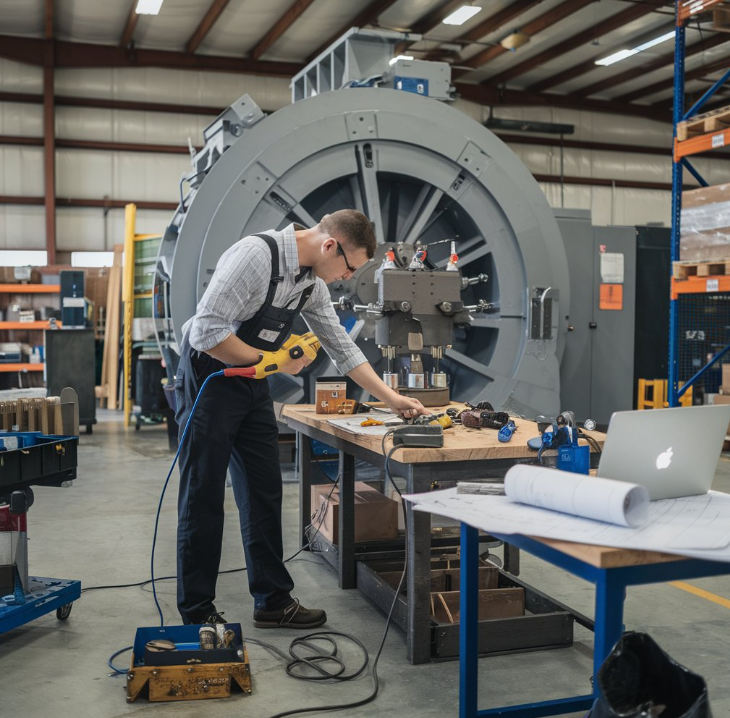Reverse engineering services are revolutionizing the manufacturing landscape, offering businesses the ability to replicate, analyze, and improve existing products. By deconstructing and studying components, companies can identify inefficiencies, modernize designs, and create innovative solutions that propel them ahead of the competition. This technique is no longer just a tool for replication; it has become a driver of innovation in industries ranging from aerospace to consumer electronics.
In this article, we’ll explore how Reverse Engineering Services are transforming manufacturing and why they are critical to staying competitive in today’s dynamic market.
What Is Reverse Engineering in Manufacturing?
Reverse engineering involves analyzing a physical product, component, or system to understand its design, functionality, and construction. Using advanced tools like 3D scanning, CAD (computer-aided design), and digital modeling, reverse engineering captures precise details of an object and reconstructs its digital or physical form.
Key Steps in Reverse Engineering:
- Data Collection: Scanning and measuring the physical object using tools like laser scanners or CT scanners.
- Digital Reconstruction: Creating a 3D model or CAD design based on the collected data.
- Analysis and Modification: Studying the design to improve performance, reduce costs, or address specific needs.
- Reproduction or Innovation: Using the information to recreate or enhance the product.
How Reverse Engineering Services Drive Innovation
1. Modernizing Legacy Components
Many industries rely on outdated equipment or parts that are no longer in production. Reverse engineering enables manufacturers to recreate these legacy components, ensuring compatibility and extending the lifespan of older systems.
- Example: Aerospace companies use reverse engineering to modernize decades-old aircraft components, integrating them with new technologies.
2. Accelerating Product Development
Reverse engineering reduces the time and cost involved in developing new products. By analyzing competitor products or existing solutions, manufacturers can identify improvements and bring better products to market faster.
- Example: Consumer electronics firms often reverse engineer competitors’ devices to understand their design and functionality, inspiring new innovations.
3. Enhancing Design and Performance
Through reverse engineering, manufacturers can pinpoint weaknesses or inefficiencies in a product’s design. This information enables them to create enhanced versions that perform better, last longer, or are more cost-effective to produce.
- Example: Automotive companies reverse engineer engines to optimize fuel efficiency and reduce emissions.
4. Facilitating Customization
Reverse engineering allows businesses to tailor products to specific customer requirements, creating unique solutions that address niche needs.
- Example: Medical device manufacturers use reverse engineering to create patient-specific implants or prosthetics, improving patient outcomes.
5. Supporting Sustainability Efforts
Reverse engineering contributes to sustainability by enabling manufacturers to repair, recycle, or repurpose existing components instead of discarding them. This reduces waste and promotes circular manufacturing practices.
- Example: Electronics manufacturers reverse engineer parts to refurbish and upgrade devices, extending their lifecycle.
Technologies Empowering Reverse Engineering
Several advanced tools and technologies are critical to the success of reverse engineering services:
1. 3D Scanning
High-precision 3D scanners capture the geometry and dimensions of physical objects, creating accurate digital models.
2. CAD Software
CAD tools allow engineers to reconstruct, modify, and analyze designs, providing a foundation for innovation.
3. Simulation and Testing
Digital models can be tested in virtual environments to predict performance, identify flaws, and refine designs.
4. Additive Manufacturing
Also known as 3D printing, additive manufacturing works hand-in-hand with reverse engineering to rapidly prototype and produce parts.
Industries Benefiting from Reverse Engineering Services
1. Automotive
- Optimizing engine components for better performance.
- Recreating hard-to-find parts for classic cars.
- Innovating lightweight materials for fuel efficiency.
2. Aerospace
- Ensuring the compatibility of replacement parts in older aircraft.
- Enhancing designs for safety and aerodynamics.
- Integrating modern technologies into legacy systems.
3. Consumer Electronics
- Analyzing competitors’ products for benchmarking and improvement.
- Innovating compact, efficient designs for next-generation devices.
4. Healthcare
- Designing custom medical implants and devices.
- Improving the functionality and durability of prosthetics.
- Recreating outdated but essential medical tools.
5. Industrial Manufacturing
- Modernizing machinery components to improve efficiency.
- Repairing critical systems without replacing entire units.
- Customizing tools and equipment for specific production needs.
Advantages of Reverse Engineering Services
- Cost Savings: Reduces the need for extensive R&D and minimizes downtime by recreating unavailable parts.
- Faster Innovation: Speeds up the product development process by providing a foundation for improvement.
- Improved Quality: Enables manufacturers to refine designs, increasing durability and functionality.
- Competitive Edge: Helps businesses stay ahead by adapting and improving upon existing solutions.
- Sustainability: Promotes eco-friendly practices by enabling repairs and recycling.
Challenges in Reverse Engineering
While reverse engineering services offer significant benefits, there are some challenges to consider:
- Intellectual Property Concerns: Analyzing a competitor’s product requires careful navigation of copyright and patent laws.
- Data Accuracy: Achieving precise measurements and accurate models demands advanced tools and expertise.
- Complexity of Systems: Highly intricate systems can be challenging to deconstruct and understand.
Conclusion
Reverse engineering services are a cornerstone of modern manufacturing, enabling businesses to innovate, improve, and remain competitive. From enhancing product performance to modernizing outdated components, reverse engineering empowers manufacturers to tackle challenges with efficiency and creativity.
By leveraging cutting-edge tools and techniques, companies can unlock new possibilities in design, sustainability, and customization, making reverse engineering an essential driver of innovation in the manufacturing world.
